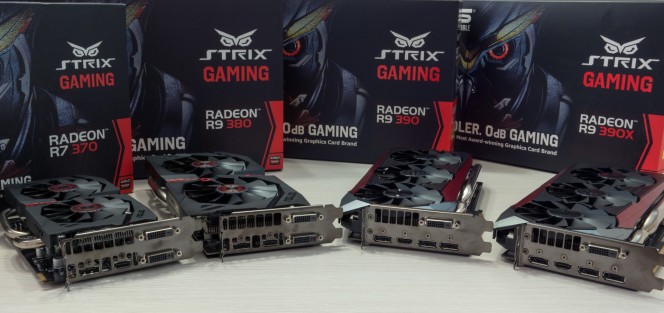For a while now, Asus has been known on their Strix GPU series, designed for those that want better performance, better cooling, and simply top quality. With that in mind, the new generation of AMD Radeon 3xx chips presented us with an opportunity to check out the new range of Strix cards based on them.
The Evolution of Radeon
At this year’s E3, AMD showcased the newest architecture featured in their Fury cards that truly brings many improvements, from their new memory controller, to water cooling as a standard. However, those cards currently easily price at over 100.000 dinars in our market, making them much less interesting to review as something that an average gamer simply cannot afford.
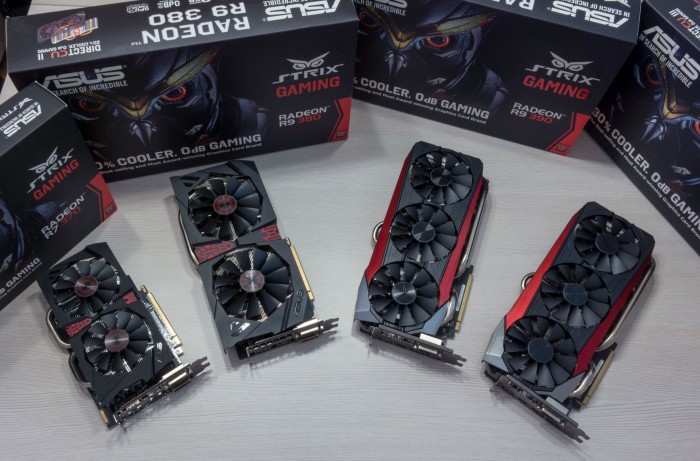
On the other hand, AMD has made a rather strange decision in which all of the chips that are price- and performance-wise beneath Fury models have been simply “rebranded “ and offered once again to gamers as new models. This practically means that all of the models presented here today are nothing especially new on the market, except for a few improvements and additions that were implemented by the card’s manufacturer, i.e. Asus. Therefore, to simplify the comparisons, at the beginning of every review we will note what the card is for and which chip it used to be. Another point to have in mind is that mid-range chips are referenced as R7, while those of higher range are referenced as R9, as well as that we have decided not get review the weakest and cheapest model R7 360. One of the reasons for that being that in the meantime integrated graphics solutions made significant advancements, which beggars the question at how much difference in performance can there be between the cheapest GPU and the one integrated in the processor. It further accentuates the point when we count in the fact that the other big graphics chips manufacturer doesn’t even plan on releasing a 110€ graphics solution, probably because they believe that there is no need for one, with which we agree. It remains to be seen how these models will perform when DirectX 12 sees wider use in games, because that’s something that AMD counts on to one-up the competition on account of optimization.
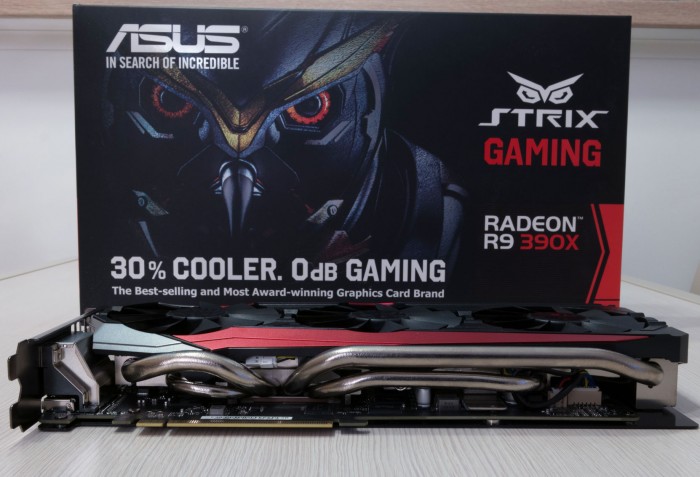
Card by card
Radeon R7 370 is a graphics chip that AMD markets as the ideal solution for those that want the best performance in the current popular online games, such as DotA2, LoL, CS:GO, World of Tanks, etc. Meaning that these are the games that count more on the scale of their audience, and in which the developers seek to make them as accessible as possible, so that they can be played on weaker machines. Our tests confirm this claim when running these games in Full HD, in which all of them run very well. It should be noted though, that this is the identical chip to last generation’s R7 265, and HD 7850 from the one previous. Ok, so the chip draws less power and has lower heat output, which allows for higher clock speeds, and the card we tested had 4GB of GDDR5 memory, but it’s still peculiar that in essence this is a third generation with no major upgrades. Therefore, this card is going to struggle with games like Mortal Kombat X or Witcher 3, in which you will certainly need to lower the details and possibly the resolution as well. And which further beggars the question, how will it handle any future titles? On the other hand, the Asus version itself is fairly interesting, mostly because of its cooling solution that is considerably larger that the card’s PCB. This combined with new fan wing design led Asus to claim 0dB noise output for this card. Sadly, we weren’t able to completely confirm this, because of other sources of noise like the CPU and PSU fans, as well as not having a proper sound room, but it’s certain that all the cards in this test that were marketed as silent, have performed very quietly even under full load, which wasn’t the case with previous generations. Another praise we have for Asus is their great software that will allow you a number of features – from overclocking the card, to recording your gameplay or streaming directly. Bear in mind that you will need an additional 6-pin power connector, and another cool feature is an LED that Asus has implemented on all their cards that will light up red if there is not enough power coming to the card, or white if everything’s ok.
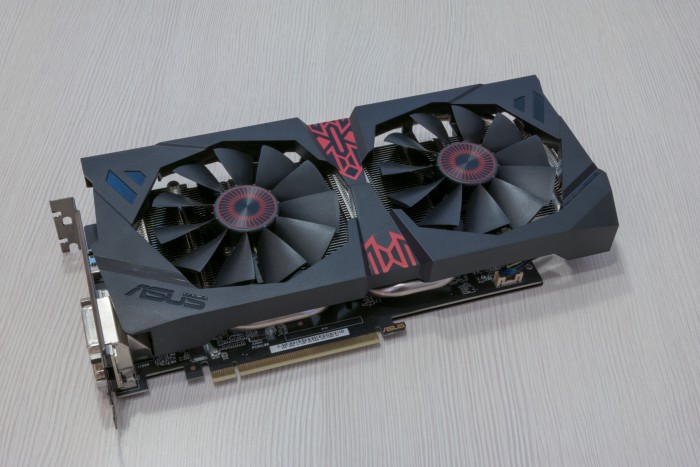
For Radeon R9 380 chip AMD claims that it’s ideal for any type of 2k gaming, i.e. gaming in Full HD. We can only partially agree on this, because when we ran Witcher 3 for example, with details not even on max, we only got about 40 fps on average. It’s playable, yes, but we would have liked to have seen a bit more. This result isn’t that strange though, when we consider that this chip is actually a directly renamed R9 285. AMD even states that R9 380 can be used to play in 1440p (2560×1440, the resolution on most 27” monitors nowadays) and that framerate won’t significantly drop, but we would still have liked it to have a bit more juice in reserve. A good feature is that this card has 4GB of memory, which should come in handy in some future titles. When we look at the Asus Strix version itself, we can see a much more serious cooling solution, and we applaud the inclusion of a metal backplate that protects the PCB and prevents sagging while helping with cooling. It uses an extra 8-pin connector for extra power, and the card itself is a bit bulkier in size.
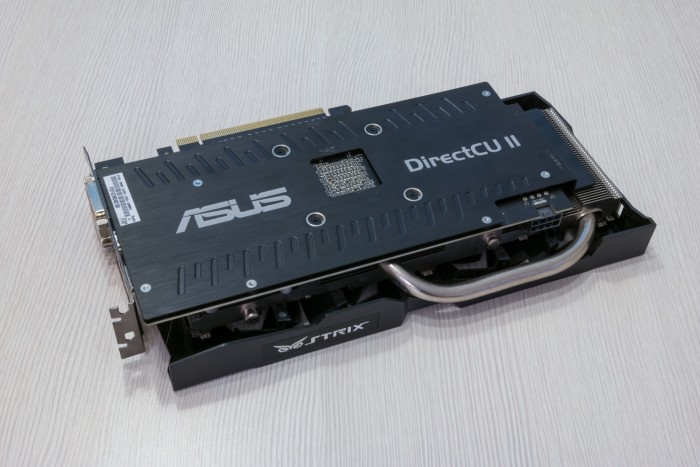
And finally, there are Radeon R9 390 and 390X, the chips that AMD markets as 4k ready. Although it’s a good marketing ploy, you’ll actually be able to play only the less demanding games in 4k, while for those more advanced games you’ll need a much pricier Fury card. Of course, you’ll also need a 4k-ready monitor or TV. In actuality, these are rebranded R9 290 and R9 290X chips and the only major difference is a slightly faster memory bus and that they now come equipped with 8GB of memory, probably under the assumption that it’s going to be useful in higher resolutions and newer games. All in all, all games run very well in Full HD on both cards, while in 1440p model 390 slightly lags behind its namesake with an X. But to be sure, if you invest in one of these cards, you’ll be able to play all current games on max in normal resolutions. Both Strix models are physically identical, so much so that we had to double check the barcode signs to be sure we were packaging back the correct one to its respective box. Both cards are physically huge, and simply couldn’t fit into our mid-tower test case, so all the testing had to be done on a desk. And the fact that they have three fans shouldn’t concern you, because they proved to be almost completely silent even under full load. What you should note however is that these cards need one 8-pin and one additional 6-pin connector to power, as well as that under load they can use up to 300W, which all means that you’ll need a strong PSU to run these beasts.
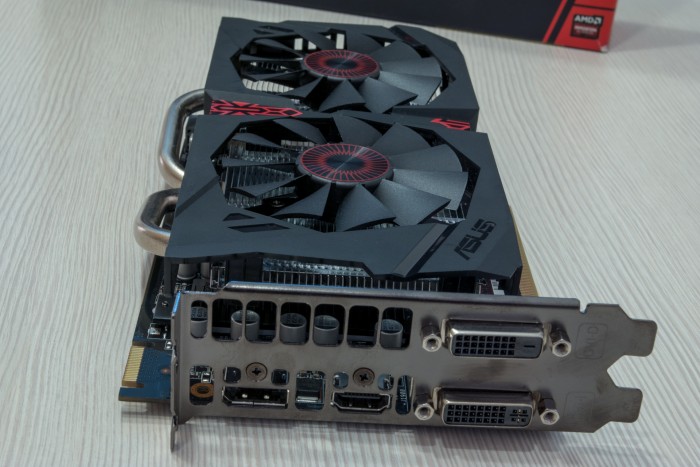
Conclusion
Radeon’s new 3xx series brings something for everyone, but sadly nothing especially innovating considering they’re mostly rebranded previous-gen products. Another problem they brought was absence of lowered prices, in fact, in our market the models R7 370 and R9 380 are vastly more expensive than their predecessors with which they share a large portion of characteristics. And R9 390 and 390X are globally more expensive than their predecessors, which they attempt to justify by them having more available memory. On the other hand, their competition is very strong, so we can’t wait for AMD to lower the price of one of the Fury models to a price-range available to mere mortals, because that would greatly improve their competitiveness.
When we look at Asus Strix cards, we only have words of praise – from the cooler design, noise cancellation, excellent software, to protection and beautiful and practical packaging, as well as the little things like the LED indicators; everything is well thought-out and exudes quality. It does mean that they are a bit more expensive than competition models, which is understandable, and we have no doubts when we recommend them for your consideration.









